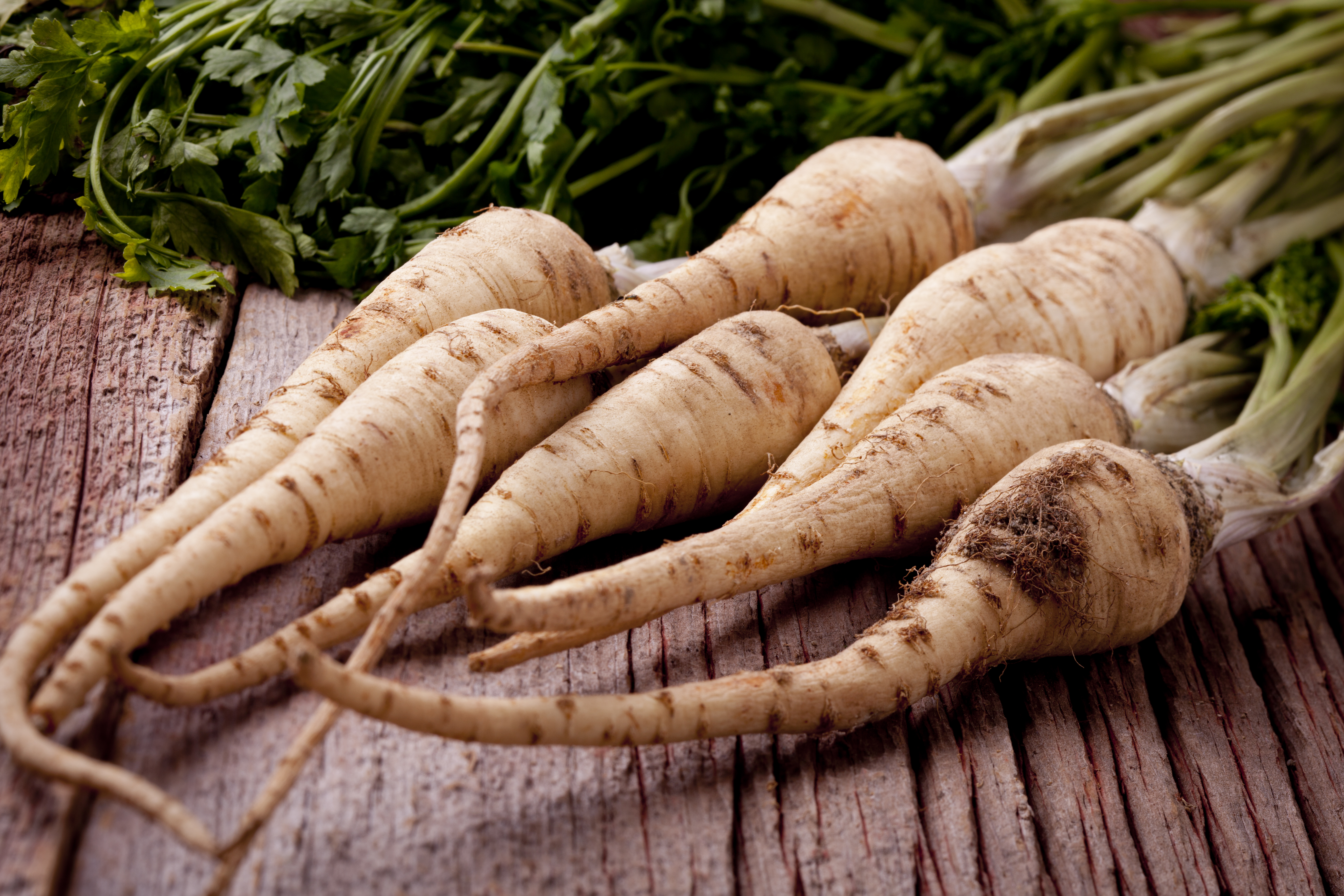Parsnips are so much more than just pale carrots. Enjoy this resourceful root vegetable in both sweet and savoury dishes.
Optimal Storage
- Do not wash until ready to use.
- Store in a breathable bag in the high-humidity drawer of the refrigerator.
- Separate green tops from the root, leaving just 2.5 cm of stem (otherwise the greens will draw moisture away from the parsnip).
Freezing
- Wash, peel and chop (if necessary, chop out the hard core), blanch, immerse in ice water, dry, and pack into an airtight container.

Root to Fruit
- Young parsnips and parsnips without a waxed coating do not need to be peeled, just washed well. If you scratch the peel with your fingernail and notice a waxy residue, peel the parsnip and discard the peels.
- When dealing with older parsnips, peel very thinly to avoid waste. Make a judgement call on whether the central core is too fibrous and tough to be cooked.
- Parsnips are very sweet and can be grated and used in cakes and breads.
- Dehydrate parsnip peels to make crispy-crunchy veggie chips.
Revival
- If your parsnips, are looking a little limp, they’ll still be delicious roasted. Toss them in the oven with a drizzle of oil and a dash of salt and pepper.

